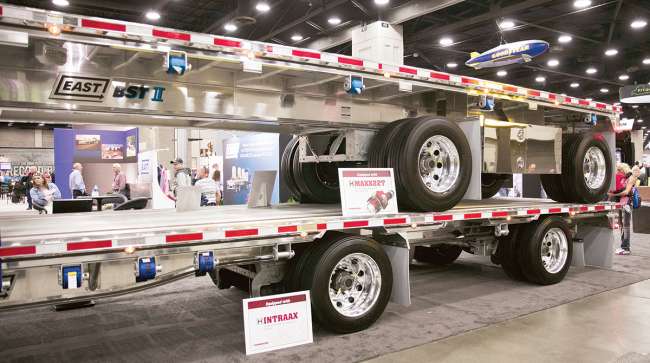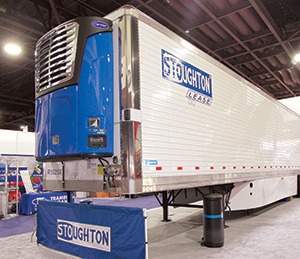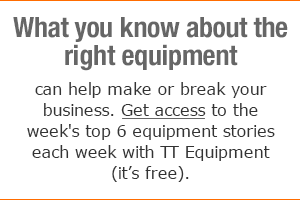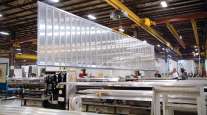Senior Reporter
Trailer Orders Surge to Start 2018, Passing 39,000

January trailer orders surged past 39,000 to the fifth-highest order month in industry history as refrigerated trailers posted a monthly record, industry analysts said.
ACT Research Co. pegged the total at 39,100. Its preliminary estimate is typically within 3% of the manufacturers’ final number, due soon.
January’s orders improved 22% over the 32,174 placed a year earlier. The latest orders also exceeded any placed in 2017 except for November and December, which were the third- and second-best months of all time, respectively.
Research company FTR placed orders in the 40,000 range and noted January order activity is expected to increase backlogs to the highest level since March 2016.
The majority of trailer categories posted positive year-over-year performance, and refrigerated trailer orders set a monthly record, coming in 250% better than last January, according to ACT.
January’s order volume was “amazing,” said Frank Maly, ACT director of commercial vehicle transportation analysis and research. “I don’t want to say everything is huge. We are getting a trade-off one month to the next [when specific segments are stronger].”
However, Maly is not forecasting further massive spikes.
“We are looking at a little better year this year than last year. Nothing significant. We are also looking at a very similar year in 2019 to 2018,” he added.
At the same time, FTR pointed to the vibrant economy in which fleets are hurrying to add capacity.
“Within that environment there is a lot of stress on the industry to be able to handle it and perform,” as they face a driver shortage and rapid freight growth, said Don Ake, vice president of commercial vehicles at FTR.
That stress could increase, he added.
FTR’s freight forecast expects 4.4% more loadings in 2018 compared with 2017, he said.

Ake
In some segments, there does not seem to be any end in sight to the pressure for more trailers, said Craig Bennett, senior vice president of sales and marketing for Utility Trailer Manufacturing Co.
“[Electronic logging device] rules continue to require more trailers to be serviced by the limited supply of trucks with seated drivers in efficient routes,” he said.
Until recently, all orders received at East Manufacturing Corp. were for replacement trailers, said President David de Poincy.
East builds all-aluminum trailers in the dump, platform and refuse segments, and has gained market share by taking business from its competitors, de Poincy said. Plus, with material costs rising, East raised prices beginning Feb. 1 and the increase “appears to be holding,” he said.
Strick Group Chief Sales Officer Charles Willmott said that over the past 75 years, the average trailer cycle peak-to-peak lasted about six years.
“A case could be made for this demand cycle really beginning in 2012, putting 2018 spot on in terms of the average 6 year cycle,” he said. “Keep in mind that not only was the depth of the 2007-2009 meltdown great, the breadth of it was enormous as well.”
Willmott said that 3% to 5% of the North American trailer fleet was scrapped between 2008 and 2010, helping set the stage for this demand.
“Scrap prices were relatively high and storage and parking costs were draining the survival cash of the owners,” Willmott said.
Hyundai Translead Chief Sales Officer Glenn Harney agreed 2018 “could bring” the peak of the current cycle even with “primarily existing customers ordering more trailers.”
At the same time, Stoughton Trailers has added manufacturing capacity to offer a new product.

Stoughton Reefer (John Sommers II for Transport Topics)
“We have had a lot of demand for our new reefer, but are filling key partner orders to start out with,” Vice President of Sales David Giesen said.
He added, “Our suppliers are feeling the pressure to keep up with [overall] demand.”
Utility’s Bennett said some tight supply exists “with tires and gears.”
He also noted that the California Air Resources Board’s new potential rules, when and if they are published, “may accelerate trailer orders.”
CARB on Feb. 8 voted to “essentially align” the state’s Phase 2 greenhouse gas regulations with the federal Phase 2 GHG standards, including regulations of semi-trailers and glider kits — enforcement of both has stalled under the Trump administration.
“This harmonization allows manufacturers to continue to build a single fleet of vehicles and engines for the U.S. market,” according to comments the Motor & Equipment Manufacturers Association submitted this month to CARB.



